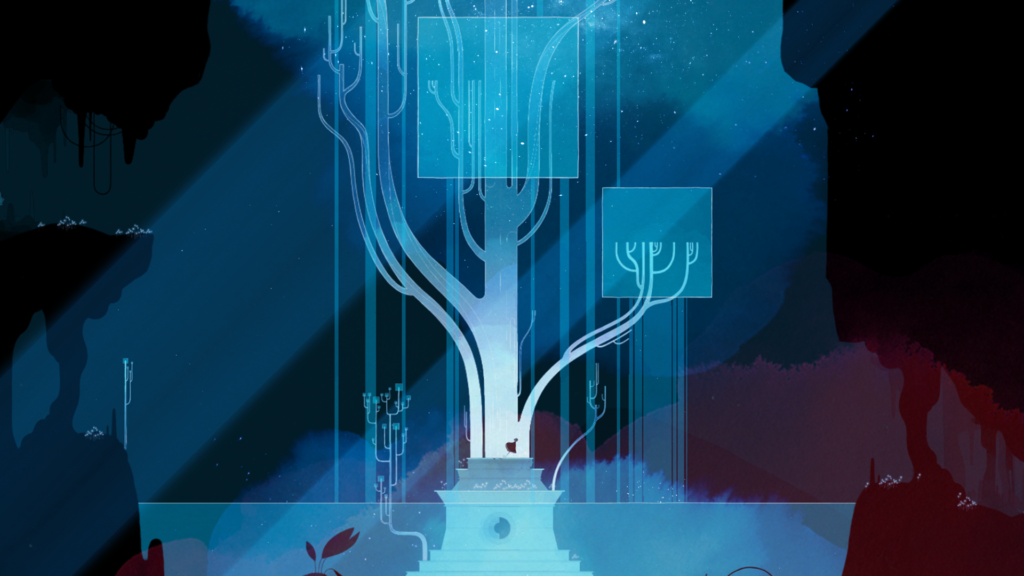We’ve talked about several creative games on the blog before, and how they can transcend the element of plain entertainment to reach the level of work of art. This review explores how Gris by Nomada Studio: A Visual and Emotional Masterpiece Review is a perfect example of that. Released in December 2018 for most of the consoles, Gris (gray in English) came with a very known concept, a platformer, but with the interesting twist of having beautiful visuals along with a narrative driven game, told without words and tackling topics like grief and moving on.
The game was developed by a Spanish studio named Nomada Studio, based in Barcelona. The studio is formed not only by video game developers, but also by artists and visual designers. One of these artists was Conrad Roset, who wanted to bring his art to the realm of video games. He met the game developers Adrian Cuevas y Roger Mendoza, and with the reunion of these three, Gris was born.
After having thousands of games in the platformer genre, one would think there is no way this genre can evolve, but many talented developers, specially in the indie sector, has demonstrated that creativity seems to be endless, and more and more interesting concepts keep popping up, with games like Limbo, Hollow Knight, Ori and the games we’ve already reviewed like Celeste and Blasphemous.
I was very excited to play this game, since I heard so many good things about it. When I first saw the trailer I was amazed by the beautiful visuals of the game and the fluidity the gameplay seemed to have. In the world of indie games, the platformer is one of my favorites.

Visual Elegance: A Masterclass in Art Direction
Conrad Roset style is automatically identifiable in this game. His style has very characteristic elements, like the use of color with a white background, the use of fine lines and a very smart use of the watercolor art form. Roset’s attention to anatomical detail is clear in the character’s graceful and lifelike movements, while the use of flowing lines and intricate patterns adds an otherworldly quality to the art.
The way light and shadow play upon his creations creates a captivating sense of depth and dimension, enhancing the immersion into the game’s world. This is clearly represented in the game, as the movement of our main character, her clothes and the environment have a high level of fluidity.
In GRIS, the art style for the levels is nothing short of breathtaking. Every frame of the game appears to have been meticulously hand-painted, resulting in a mesmerizing visual experience that resembles a living watercolor painting. The art style seamlessly adapts to the emotional tone of the narrative, since every level deals with different themes, the shifting from somber and muted tones during moments of introspection to vibrant and lively shades during moments of triumph are very clear and an important element for the visual storytelling.
Unveiling Emotions: A Narrative Journey Through Silence
As mentioned before, the story develops in a visual way and there’s virtually no dialogue. The story is told through the experiences of the titular hero, Gris. We will guide Gris through a world filled with both beauty and sorrow. Each stage of the game represents a different phase of grief and the narrative unfolds through symbolism, visual cues, and environmental storytelling.
The absence of traditional dialogue allows the game to speak to players on a more emotional level. Gris’s evolution is mirrored in her changing abilities, which not only aid her progress but also symbolize her growth and healing. With the absence of dialogue, the game speaks to players in a more personal way, since we help Gris in her fight for grief and the process of healing, makinging it a more relatable way of storytelling, going beyond languages and speech.
The lack of dialogue also invites the players to interpret every stage in their own way. This storytelling method creates a personal connection, as players become active participants in Gris’s emotional journey. Gris stands as a testament to the potential of video games as a storytelling medium.
Sculpting Feelings: Gameplay and Emotional Resonance
At the beginning, Gris has virtually no abilities, but as we progress in the game, new abilities appear. As you make your way through the game, Gris picks up new abilities that go hand in hand with her emotional evolution. These skills aren’t just tools for exploring the world – they symbolize her personal growth and recovery.
Each ability reflects a unique emotion, and the game does a wonderful job weaving them into the gameplay. This not only makes the mechanics more engaging but also adds an extra layer of meaning to the story. The abilities are directly related to the levels and the different emotions represented throughout the game.
The primary abilities are double jump, which allows you to reach higher sections. Heavy form, which transforms Gris’s cloak into a heavy block, useful to tear down surfaces and add weight when needed. Swimming, which transforms Gris into a kind of mantaray, allowing you to traverse aquatic levels and finally a grappling hook, which lets you grapple onto objects, helping her swing across gaps and reach new areas.
Gris is a very exciting game, it shows us how videogames are truly an art form and a great way to tell stories of all kinds. I think it’s also particularly exciting because these kinds of games can inspire future generations, allowing for the videogame world to continue expanding in very interesting concepts, specially in the indie world, where commercial restraints wouldn’t allow this kind of experimentation. Gris is Nomada Studio’s first game, and I’m excited about what other works of art they will be showing us in the future. Check out more of Nomada Studio!